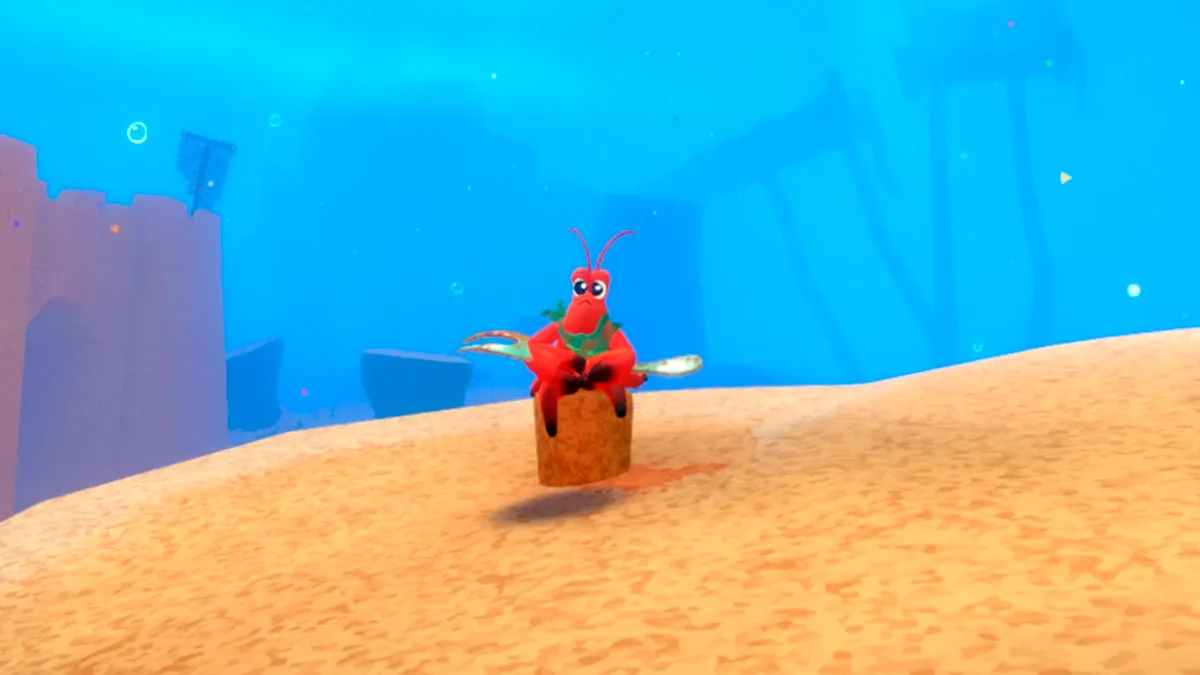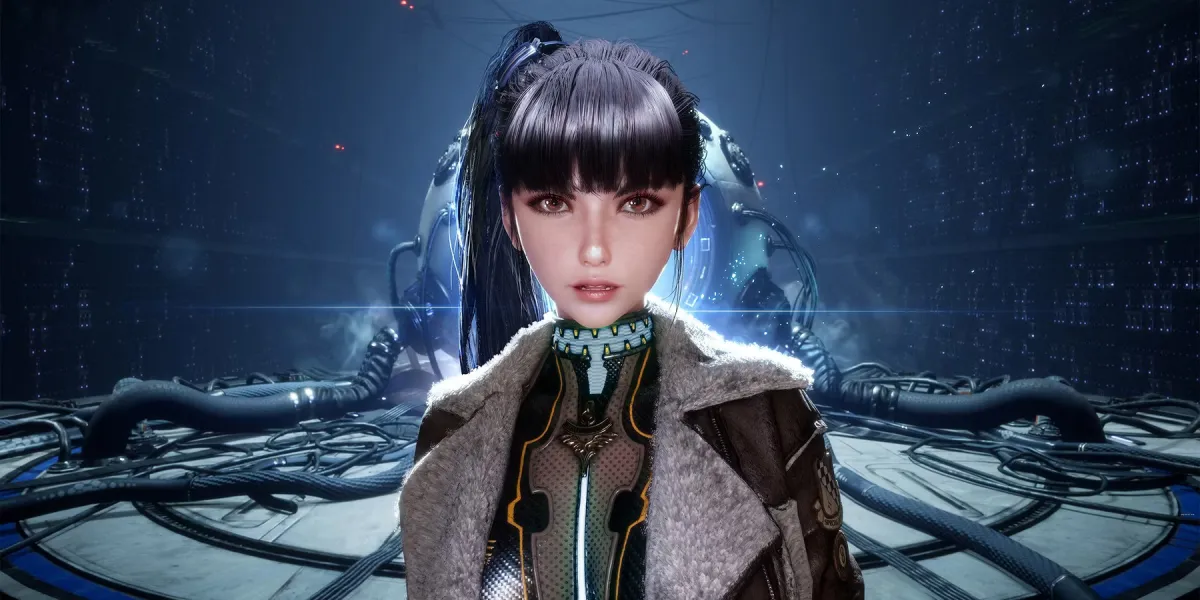Developed and published by Heart Machine. Released on March 31, 2016. Available on PC. PlayStation 4, Xbox One, PlayStation Vita, Wii U versions TBA.
After three tries, I was angry at the bird-like sorcerer that just would not die. After 10, I had made up a few new curse words and temporarily damaged my Xbox One gamepad. By the time I stopped counting I was just running through the motions, but was inching closer to finally beating him. Finally, I landed the death blow – but was killed at the exact moment that I killed him. I respawned, angry but determined to finally take him down once and for all. But he was already dead. Apparently, I had killed him just before he had killed me, and although I respawned, he did not. The win felt hollow. Unearned. I believe this may be the first time I have ever been disappointed after defeating a difficult enemy in a game.
This was the first and only moment of disappointment I felt when playing Hyper Light Drifter.

To call Hyper Light Drifter a good game is a disservice. It is enthralling, spellbinding, captivating, and any other multi-syllable complimentary term you can think of. “Retro-inspired” independent games are hardly rare, and yet the “inspired” part more often than not applies primarily, if not exclusively, to the art style. While Hyper Light Drifter has stunning pixel art, the game itself, its very essence, draws inspiration from some of gaming’s greatest pioneers. The unforgiving difficulty, fantastical setting, and wordless story blend together seamlessly, marrying the novel with the familiar with the type of synergy that that many have attempted and few have achieved so effectively.
When the game opens, you don’t know who you are or how you found yourself in this neon post-apocalyptic wonderland. Your enigmatic protagonist is alone, wandering aimlessly on a desperate mission to find something. The land is ruined, and the few who remain seem as lost as you. The story is not explicitly spelled out, rather serves as the implied tale of a mysterious figure desperately trying to survive both his environment and his own body and mind. There are no conversations – any stragglers you attempt to interact with respond with incoherent shapes (a foreign language, perhaps) or short, one sided pictographic conversations. Not a word is uttered, to you or to your character. Rather, the tale unfolds using the dystopian atmosphere as the sole means of conveying the narrative – a daring approach, and one that would likely fail with lesser titles. This particular game, however, delivers masterfully, grabbing me from the first scene and holding firm until the finale.

Exploration is key in Hyper Light Drifter, from the overall goal – which you don’t know – to which way you are supposed to go – which you also don’t know. You’re almost immediately greeted by multiple paths, which each individually lead to more paths, dead ends, and a fair amount of backtracking that manages to never feel irritating. The landscape dances the line between Escherian and Hyrulean, splattered with a seemingly unending swarm of hellish beasts and savage post-apocalyptic soldiers. There is no “empty space” in the game. Even dead ends hold the possibility of finding a much needed health pack or an additional piece of currency. The four main areas of the game have both a distinctive aesthetic and unique adversaries – which leads us to the best part of Hyper Light Drifter: the combat.
Combat is equally frantic and methodical, with your character balancing calculated evasive dashes with desperate swordsmanship. Button mashing will land you in a grave, with the game giving you multiple weapons and demanding that you master each of them. Slashing with your sword is limited, requiring specific timing and cool-down periods. Firearms have limited ammunition, which can be recharged by either cutting down items (like bushes, pots, or crystals) or by slashing enemies. The type of enemy you will face, and the density with which they appear, changes rapidly. It’s not uncommon to be trapped in a cordoned off area with ten or more enemies with varying movements, skills, and threat levels. In every different encounter you have to quickly assess the situation, size up the movements of the enemies you’ll be facing, and determine which weapons to use, whether or not you have time to carefully aim a firearm, when to dash, and most importantly, who to take out first.

The environment itself poses just as much of a threat as your rivals, with disappearing sections of flooring, crystals that spring from the ground and impale you, and flames that shoot from vents should you step just a bit too close. Both combat and navigation call for precise refinement and finesse that, somehow, does not feel suffocating. The game is punishing, but it is also fair. If you think health packs are going to carry you through the game, think again. Your health is limited, and even packing away a few healing agents will do you no good when you’re facing off against swarms of enemies without a plan in place. However, when you are killed you will respawn nearby with all of the items that you had prior to dying.
Upgrades are available for purchase, and range from the ability to carry additional health packs to improved dashing techniques. In order to obtain these upgrades, you must collect the in-game currency, which presents in the form of small golden chips. Four individual chips fit together to create one piece of currency – think The Legend of Zelda‘s heart containers – and most upgrades require two or three pieces of currency.
The stunning aesthetics and spellbinding journey are emphasized by evocative music. For a story that is told without words, music is paramount. Exploration is accompanied by somber tracks which build organically as you approach an enemy, culminating in a grand, urgent score for boss fights.
The only true complaint I can muster is that the keyboard and mouse controls are terrible – however, you are advised when the game is booting up that it is best played with a controller, so to hold this point against Heart Machine would be a bit unfair.
Throughout the first few areas I was completely lost, with no clue where any particular path would lead me, what would greet me at the end of the path, or whether or not I would succumb to external or internal forces. Shortly after I found myself engaged in frantic combat, immersed in an inscrutable yet downright captivating story that held strong right until the satisfying finale. It is an enchanting, haunting title that masterfully captures the excitement and the fear of the unknown. My time with Hyper Light Drifter feels more like a place that I once visited than a game that I once played.
Bottom Line: Hyper Light Drifter is a breathtaking game that draws heavily from gaming’s most prominent pioneers without relying too heavily on their influence. It is an eclectic masterpiece that feels more like an experience than a video game.
Recommendation: Yes. Just yes.
[rating=5.0]


